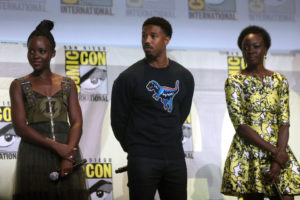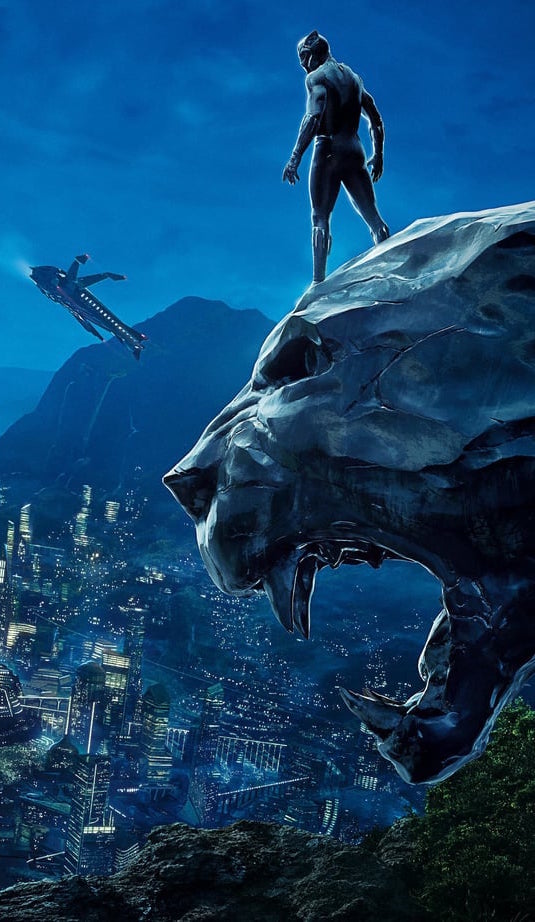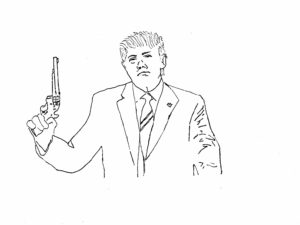Black Panther is a wonderful, groundbreaking film. The cinematography is creative for a superhero movie. The costume design is a beautiful hybrid of futuristic-superhero tech and traditional African garb, and the rhythmic score is written and performed solely by black artists, such as Kendrick Lamar, SOB x RBE, and The Weeknd. The all-star cast includes black actors from around the world.
Black Panther was everything I expected it to be: a phenomenal Marvel superhero film.
But as a black film, Black Panther seemed disappointing. In the past few years, we’ve seen other awe-inspiring films that captured the lineage of adversity and discrimination against black people, such as Moonlight, Hidden Figures, Get Out and Fences. Compared to these, Black Panther seems empty and surface-level. Its throughline of the diaspora is not fresh. The conversation of the diaspora versus individualism has already been heavily discussed, for example between Marcus Garvey and W.E.B. DuBois, as well as by the Black Panther Party and non-violent Civil Rights movement.
Most of all, Black Panther didn’t teach me anything new, whereas I felt that I came out of the other films with a new understanding of a conversation or topic.
However, in my opinion, comparing Black Panther to non-superhero films is unfair, because it’s simply appealing to a different, wider audience. The reason Black Panther is so impressively groundbreaking is that it carves a new unexplored channel into a genre, opening up superhero movies to focus on non-white cultures.
Around Lick-Wilmerding, Black Panther has been one the most discussed films of the year. I created an open discussion, inviting students and teachers to join in converation. Michecia Jones, Catherine Fung, Christopher Schenk, (English teachers at Lick-Wilmerding) and Raul Betancourt (who teaches chemistry at L-W) accepted the invitation.
Many people before they see Black Panther do not expect its thought-provoking power and brilliance. Jones, for example, says she “wasn’t actually expecting a lot, [she] was just there to see Wakanda.” Jones says that the movie differed from other attempts, such as the Black Panther cartoon. “I didn’t really get a lot out of [the] cartoon, and I thought the movie would be of similar fashion. It totally blew my mind. It was way more complex, the plot was good. I really enjoyed myself and saw it twice.”
Of course, while the movie features almost all black people, the film is accessible to other groups, radically proving that a blockbuster superhero movie does not have to be eurocentric to appeal to a widely diverse audience.
Schenk found that “one of the things that makes Black Panther so powerful is that it decenters whiteness. It’s different from Get Out in that way. Get Out is a story that’s told to white people, and it’s about whiteness, while Black Panther isn’t. That’s not its focus, that’s not the topic, that’s not the language it uses.”
Get Out was incredibly successful, grossing more than 255 million dollars, and although it focused on the white community, it made only about a fifth of what Black Panther has made so far.
Black Panther is not the first successful film to shift focus off of whiteness, it is the first film to do so appealing to such a broad demographic. Black Panther made a billion dollars more than Moonlight, the 2016 Academy Award winning Best Picture, which also told a story outside of the white community and focused on black lives.
Black Panther also offers an interesting take on feminism. The female leads are all powerful and independent, yet the film also shows a patriarchal leadership, in which women are never able to rule. However, women are not submissive and not submissive to men they love, exemplified by warrior Okoye who is willing to fight and kill her rebel lover W’Kabi. Fung remembers how “when [W’Kabi]’s is faced with Okoye’s charging rhino, he says, ‘My love, would you really do this?’ to invoke their love as if somehow that’s going to disarm her. She answers, ‘Yeah, no, without question.’’

Jones, to show how Okoye defies patriarchy, describes how, “Wakabi comes against Okoye and defies her from the beginning and then tries to spin her. No one’s falling for that. The movie challenges that ideal that women in love are weak and will falter when it comes to a larger loyalty because of emotion.”
Okoye is not loyal to love but loyal to the patriarchy; she is always fighting for T’Challa, the king of Wakanda. Schenk realizes this by seeing that, “It’s a hereditary male monarch who leads the society, yet all of these badass women are there and in powerful positions, but not as king.”
Black Panther, a cultural touchstone, is an important film and greatly entertaining. In today’s political climate, the issues Black Panther explores are important, making the film a must-see.
Black Panther has shown movie studios and the film world that making an African superhero film is not only marketable but wildly successful. This movie cuts the pathway to a more equal and culturally inclusive genre of movies.
To listen to the entire discussion about Black Panther or to read the transcript of the conversation visit the Paper Tiger online new section, The Mercy Show: Lick Chats






